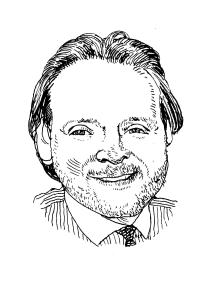
The outer boroughs have long been ignored and considered submarkets into which many Manhattan brokers would not dare venture. The boroughs do, however, make up a significant component of the New York City investment sales market and should not be overlooked. Therefore, we will conclude our three-part midyear series on the New York City investment sales market with a focus on first-half 2010 (1H10) borough activity. (The earlier two columns can be found at Observer.com/Concrete-Thoughts.)
For the purpose of our analysis, we consider northern Manhattan (north of 96th Street on the East Side and north of 110th Street on the West Side) as a submarket outside of Manhattan.
In the statistical sample in New York City that Massey Knakal uses to analyze all market statistics, there are 164,876 properties. Of these, 137,227, or roughly 83.3 percent, are situated in the outer boroughs.
In 1H10, there was a total of $6.5 billion in investment property transactions. Of this total, $5.2 billion occurred in Manhattan, with the remaining $1.3 billion happening in the boroughs. The $1.3 billion in borough transaction represented approximately 20 percent of the total, reflecting an almost inverse relationship to the distribution of buildings within the marketplace. This has been the case historically as well. Going back to 2005, in terms of aggregated dollar value of sales, the outer boroughs have represented an average of 21.2 percent of total dollar volume.
This is not surprising given the disparity between the average property sales price in the outer boroughs versus Manhattan. From 2005 through 1H10, the average property sold in Manhattan carried a price of $29.7 million; the average in the boroughs, over the same period, was just $2.21 million.
As one can imagine, there is significant volatility within the Manhattan market based upon the number of very large transactions that occur. For instance, in 2007, at the peak of the market, when large financings were readily available, the average property sold in Manhattan attained the record level of $52.5 million. This average dropped to just $12.9 million in 2009. In the outer boroughs, over the same period, the average sales price per property at the peak of the market in 2007 achieved a level of only $2.41 million. This average fell to just $1.88 million in 2009. Given the significant disparity in average property prices, it is not surprising that an overwhelming majority of the dollar volume of sales occurs in Manhattan.
Not surprisingly, when property value dropped in 2009 and obtaining large transaction financing was challenging, the total consideration in the boroughs reached a high point of 33 percent of the total sales volume, as $2.1 billion of the city’s total of $6.3 billion occurred in the outer boroughs. The low point for the borough’s contribution toward the city’s total dollar volume of sales occurred in 2007, when $9.7 billion of outer-borough sales accounted for just 16 percent of the $62.2 billion in total transaction volume.
When we examine turnover in terms of number of buildings sold, the boroughs perform more in line with their statistical contribution to the total stock of buildings. From 2005 through 1H10, the boroughs have contributed, on average, 79 percent of the total number of properties sold annually. This percentage ranges from a high point of 83 percent in 2006, when the boroughs saw 4,059 buildings sell out of a total of 4,875 in the city, to a low point of just 72 percent in 1H10. Then, 588 properties sold in the outer boroughs out of the total of 818 citywide.
This dynamic is not surprising, as Manhattan has always led the city out of economic downturns. In fact, if we look at the number of properties sold as a percentage of the total stock of buildings, we see that, thus far in 2010, Manhattan’s turnover rate is twice that of the outer boroughs. In 1H10, 230 Manhattan properties sold out of the total of 27,649, leading to an annualized turnover of 1.66 percent. In the outer boroughs, the 588 sales in 1H10 represented just 0.85 percent of the 137,277 outer-borough properties.
The rebounds from the dearth in sales volume (in terms of number of properties sold) also support the fact that Manhattan leads the city out of downturns. On a quarter-over-quarter basis, 2Q10 has been the sixth consecutive quarter of volume increases in Manhattan.
In northern Manhattan, there have been four consecutive quarters of positive turnover. In 1Q10 Brooklyn, Queens and the Bronx remained negative as turnover totals remained, remarkably, below prior periods. In 2Q10, Brooklyn and Queens turned positive for the first time in many quarters, leaving the Bronx as the only submarket still on the decline. Its performance was only slightly negative, with the number of buildings sold just 4 percent below 1Q10. We fully expect that turnover will trend positively for the Bronx in 3Q10, thereby positioning all submarkets for volume momentum in positive directions. We believe that, in terms of number of properties sold, we are well past the market bottom that occurred, very clearly, in 2Q09.
To give some perspective to the turnover rates discussed above, the annualized Manhattan turnover in 1H10 of 1.66 percent compares positively to the 1.17 percent experienced in 2009. However, it doesn’t come close to the 3.61 percent seen at the peak in 2007. It also compares unfavorably to the 2.6 percent annual average turnover realized in Manhattan since 1984. In the outer boroughs, the 1H10 turnover of 0.85 percent is well below the peak of 2.96 percent achieved in 2006.
From peak to trough, the Manhattan market saw a reduction of 68 percent, as the number of properties sold dropped from 999 in 2007 to 322 in 2009. In the outer boroughs, this percentage reduction was 73 percent as, at the peak, there were 4,059 sales in 2006; this figure dropped to just 1,114 in 2009.
IN TERMS OF INDIVIDUAL outer-borough submarket performance, some have clearly functioned better than others recently.


